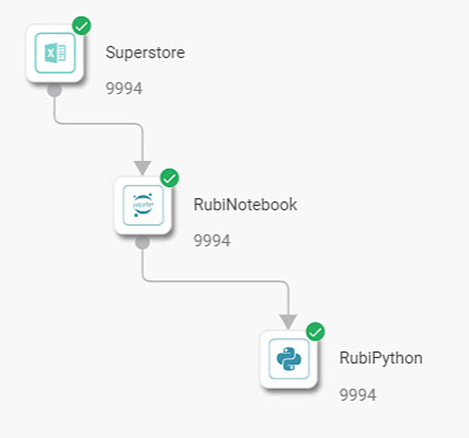You can use the output from the RubiNotebook for the successor tasks using functions.
The Figure below shows the RubiNotebook node and its successor, the RubiPython node.
The figure given below shows the data in RubiNotebook. It contains data about City and Temperature.
- For reading the dataset using the RubiNotebook please refer to Reading the dataset using the RubiNotebook
- Select the Rubipython node from the task pane.
- Click on Configure.
- Consider the following code snippet
Code | Description |
df = inputData[‘RubiNotebook’] | It access the data from RubiNotebook and stores in the df. |
Output | It creates an empty dictionary |
Output[‘Category1’]= df[‘Category’] | It maps the custom output to the column Category from RubiNotebook |
Output[‘Discount1’]= df[‘Discount’] | It maps the custom output to the column Discount from RubiNotebook |
| Output[‘Country1’]= df[‘Country’] | It maps the custom output to the column Country from RubiNotebook |
return | It returns the output |

